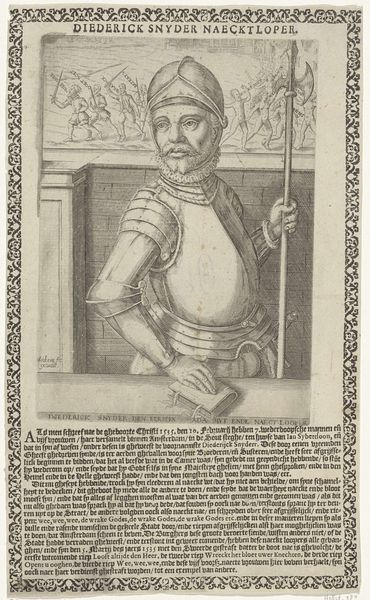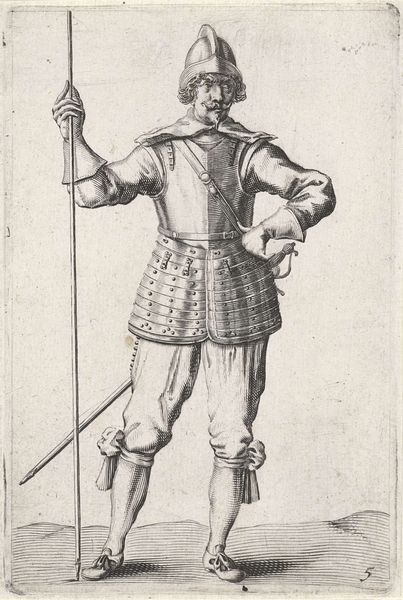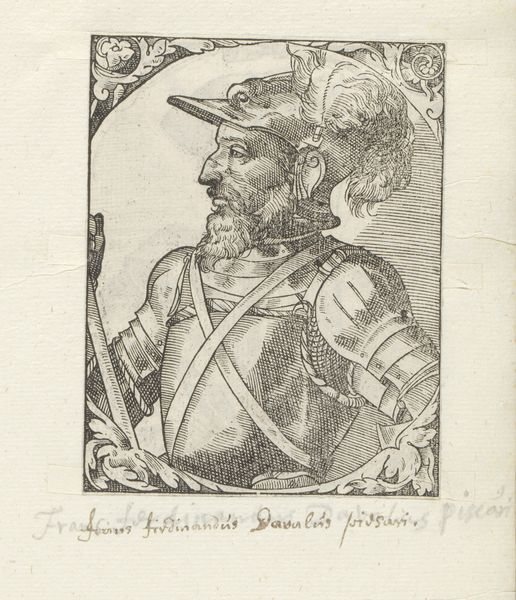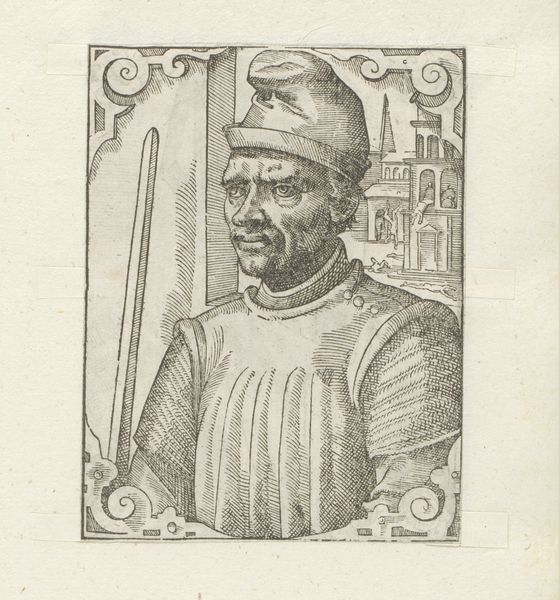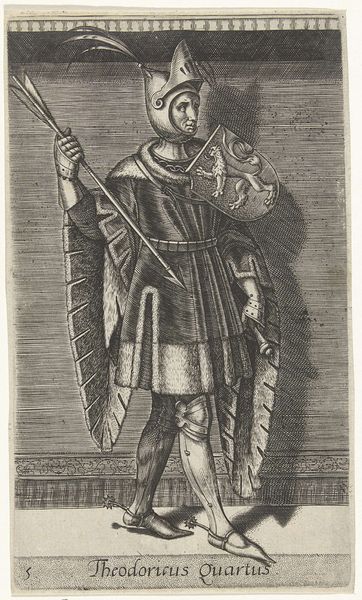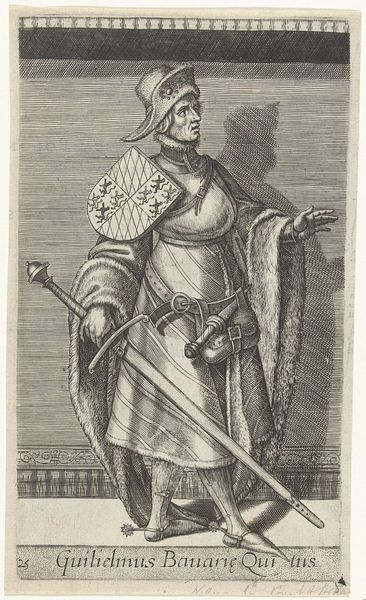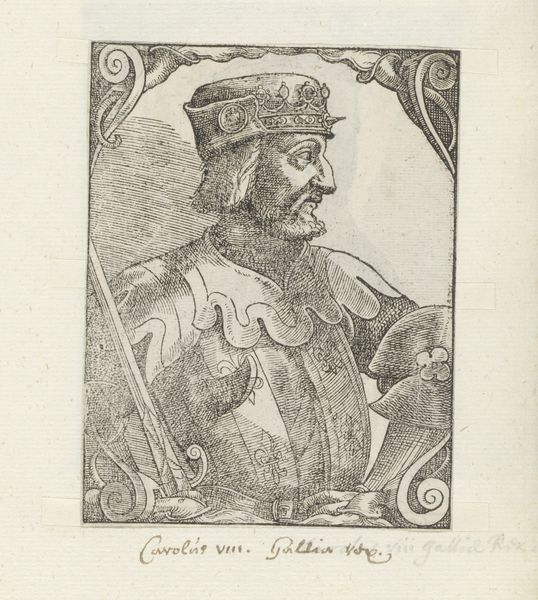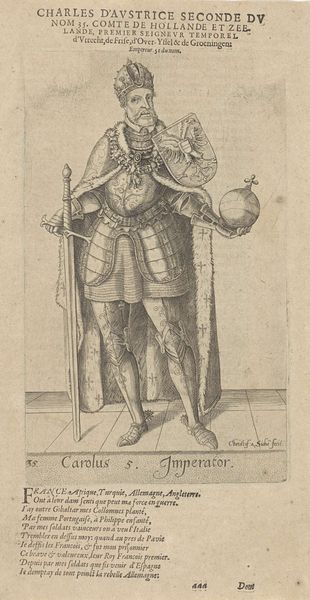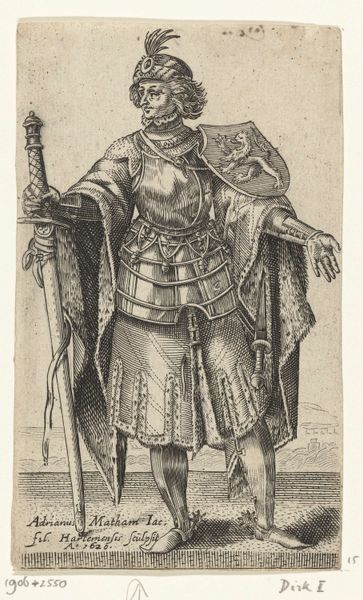
print, metal, engraving
#
baroque
# print
#
metal
#
figuration
#
form
#
line
#
history-painting
#
engraving
#
realism
Dimensions: height 181 mm, width 130 mm
Copyright: Rijks Museum: Open Domain
Curator: Here we have Christoffel van Sichem I’s 1677 engraving, "Portret van Diederick Snyder," currently held in the Rijksmuseum collection. My first thought looking at this is the remarkable contrast in textures achieved in a monochrome print. Editor: Absolutely, there's a real density to it. Look at the labor involved in creating all these fine lines to give form to Snyder’s armor, the ruff, even the stubble on his face! Curator: It’s interesting to see Snyder portrayed not just as an individual but almost as a type – a historical figure embodying military strength and perhaps civic virtue given the book and halberd he's holding. What do you make of that frieze in the background? Editor: The contrast continues—it draws you in with the main subject's intensity, then unsettles you with that background narrative. It almost looks like some satirical commentary on societal anxieties rendered with those wiry figures bearing signs... a critical observation of the times and the man. You feel the work being made as you view the overall piece. Curator: Indeed, it adds layers of context. We see not just a portrait, but a representation imbued with societal tensions. Considering the engraving process itself, it would have allowed for dissemination and wider audiences, crafting a specific image of Snyder for public consumption. A carefully managed persona, if you will. Editor: Precisely. Engraving democratized image production in a way, but the choice of what images to produce and how they are produced is always politically fraught. This piece becomes about not just who Snyder was, but the labor behind crafting his image. We must also remember this print’s placement, as part of an illustrated book on family lines and regional pride; in other words, the print is at the service of representing those historical interests. Curator: It’s remarkable how Sichem encapsulates both individual and collective narratives within this relatively small printed image. Editor: I agree; understanding how its physical components play with representation is crucial to our overall perception of the work and its subject matter.
Comments
No comments
Be the first to comment and join the conversation on the ultimate creative platform.
